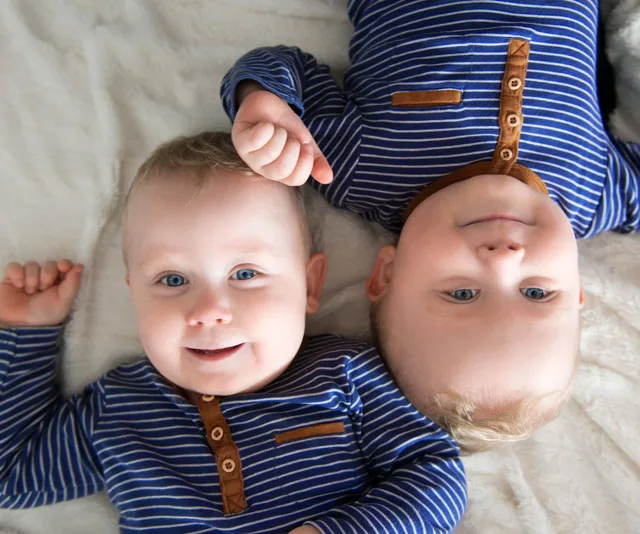You might be thrilled with the thought of having twins or quite possibly, the idea of raising two tiny people at the same time will have you wondering how on earth you would manage.
In Australia, twins occur in one in every 80 births. This means that one in 40 Australians is a twin.
READ NEXT: Tania Zaetta’s twin-mum life in pictures

Fraternal twins are no more alike than siblings born at separate times. (Image: Getty Images)
Some women are more likely than others to have twins. According to Better Health Channel, some factors that may increase your chances include the following:
• Age – women over 30 have higher levels of the sex hormone oestrogen than younger women, which means that their ovaries are stimulated to produce more than one egg at a time.
• Number of previous pregnancies – the greater the number of pregnancies, the more likely she is to conceive twins.
• Heredity – a woman is more likely to conceive fraternal twins if she is a fraternal twin, has already had fraternal twins, or has siblings who are fraternal twins.
• Race – black African women have the highest incidence of twins, while Asian women have the lowest.
• Assisted reproductive techniques – many procedures rely on stimulating the ovaries with fertility drugs to produce eggs, which can result in several eggs being released per ovulation.
• IVF – multiple embryos can be transferred to the woman’s uterus to increase the chance of success.
Continues after video
The main types of twins are fraternal twins and identical twins.
Fraternal twins
All pregnancies start when a sperm fertilises an egg. This fertilised egg is called a zygote. Sometimes a woman’s ovaries release two eggs, and two separate sperm fertilise each egg. This forms twins.
During pregnancy, the developing babies get oxygen and food from their mother through the placenta and umbilical cord. Fraternal twins have separate placentas and umbilical cords. The technical name for this is dichorionic.
Fraternal twins can be the same or opposite sex and their genes are as different as any other brother and sister. Often, same-sex fraternal twins look different – for example, they might have different hair or eye colour. Occasionally they look quite similar. Fraternal twins occur in approximately 70% of twin births in Australia.

Double the joy: IVF can also increase your chances of twins. (Image: Getty)
Identical twins
Identical twins are formed when a single fertilised egg is split in half. Each half (embryo) is genetically identical, so the babies share the same DNA.
That means the babies will share many characteristics. However, because their appearance is influenced by the environment as well as by genes, sometimes identical twins can look quite different. Identical twins may share the same placenta and amniotic sac, or they may have their own placenta and amniotic sac. You will sometimes hear identical twins referred to as ‘monozygotic’, referring to one zygote (fertilised egg).
Expecting twins?
Twins can usually be identified at the pregnant woman’s first routine ultrasound.
Very early in pregnancy, the separate embryo sacs can be seen and soon after, the bodies of each baby can be seen.
Aside from an ultrasound, late in the first trimester, a doctor may be able to hear the different heartbeats using Doppler ultrasound.

